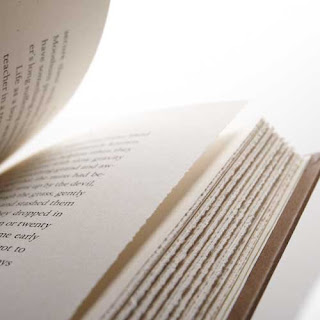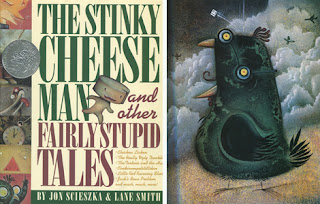"Launch" is the day at the beginning of a new book season when new books and projects are pitched to sales representatives from around the US/World. Essentially each "imprint" of Penguin (eg Puffin, Speak, Razorbill etc) develops a powerpoint presentation that gives a quick synopsis of the book and a direction for the cover. Lots and lots of work has gone into each book already once launch comes around, but this is kind of the last chance for sales, marketing, or the like to put out any fires or change directions dramatically. While Launch represents a sort of "last chance for changes" for editorial people, it marks the beginning for the design team. It sort of represents a green light for us to go ahead hiring the illustrators or photographers proposed, and to punch the gas on the design process.
It was a very cool experience for me to attend launch this week. I sat right next to the executive art director and she told me who was who, and what was going on. There were representatives from Barnes and Noble, Amazon, Wal Mart and other retail stores all giving their 2 cents on what will make the book most successful.
Book covers, are certainly a huge part of the conversation at this meeting. People tend to love or hate a book cover, and unfortunately it seems that the cover can take the blame if a book does not do well in sales. Yeah...blame the artists! lol
The best part of all was that at the end of the Puffin launch, a project that I had helped work on a tiny bit was applauded and extremely well received. Boo yeah!
My art director this week was a woman who works mainly with illustrative book covers and has a work history with picture books. "Picture books" are the books that pictures on every page. A little obvious but yeah, thats the official term.
The stinky cheese man is one of my favorite picture books.
Then a "Chapter book" is geared toward young readers and has larger words with pictures throughout, but not necessarily on every page.
This is an example of a chapter book.
Then of course, novels are books that have a designed cover with the possibility of small illustrations for chapter headers etc.
So with an art director who has a history in picture books, it was a very good scenario for me. I was very excited that she put me on a real life project of developing branding for a new fantasy series that is coming out soon. Branding for a series is essentially coming up with a visual element that remains consistent from book to book.
This Brotherband Chronicles book shows a good example of branding. The wordmark on top that says the title of the series and the wooden background is part of the branding. Sometimes the illustrator will create the branding element under the direction of the designer, but more often the illustrator will submit the illustration and the designer will create the branding.
So working on the branding was an exciting project to be assigned to. I drew up about 20 thumbnail sketches to show some directions we could go. After I got some feedback, I made 6 more refined drawings and got some feedback. Then I made 3 digital color comps with inserted illustration samples. My work was really well received by my AD so I'm excited to see what they will say next week when it is shown to the editor :)
I keep trying to ask as many questions as I can and recording what I learn. One thing that I asked about this week is "How do you, as an art director, choose an illustrator for a book?"
The short answer is that most big publishing companies work almost exclusively with Art Reps. Very, very rarely does an unsolicited mailer or email come to fruition. I, as the intern, was given the job of sorting through hundreds of mailers last week. The pile was large and the quality was all over the place. Some of the mailers were impressive, but even the good ones were seemingly drowning in the quantity. I am in no position to say that mailers will not get you work, but I have heard now from many sources that when big companies need an illustrator they immediately turn to Rep agencies.
Unfortunately, in the great big world of art there is superfluous talent. That means that to get work almost always requires more than just talent (though if your art isn't good then none of this other stuff will matter at all.) Making and keeping connections, being versatile in your skill set, unabashed self promotion, and good art representatives are just some of the things that are very important in the art world.
Oh and speaking of art reps; I learned that author/illustrators also use art reps. Trying to get a picture book published that is already "completed" is a real long shot. I don't even think it's an option with Penguin. Apparently there is a process of submitted ideas and reps that is part of a sort of due process. I'll try to elaborate on this more as I learn more.
In other small news, I met with my core group of interns this week. It was a little bit....how shall I say...pointless, but at least I got to shock them all by telling them I've never had alcohol in my life and that I've been married for 2 years. They were even more surprised that I don't want to drink alcohol, which is why I've never had it in the first place! lol good times.
Well, as you can see this internship is an awesome learning experience. Please let me know if you have any questions! I'm sure that I can find the right person to ask!
























